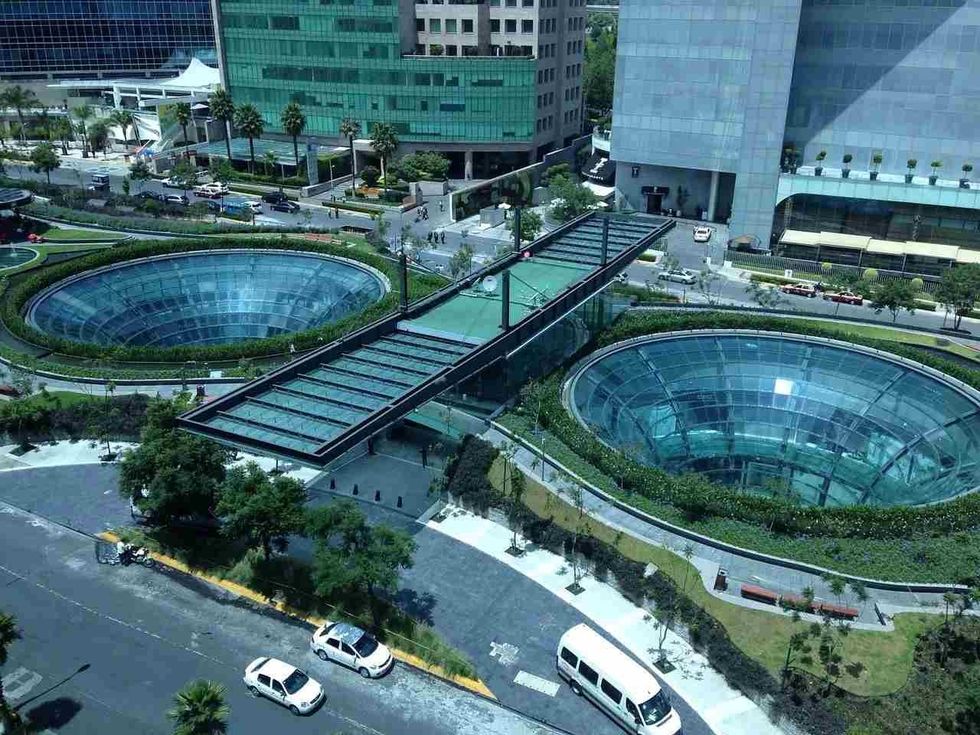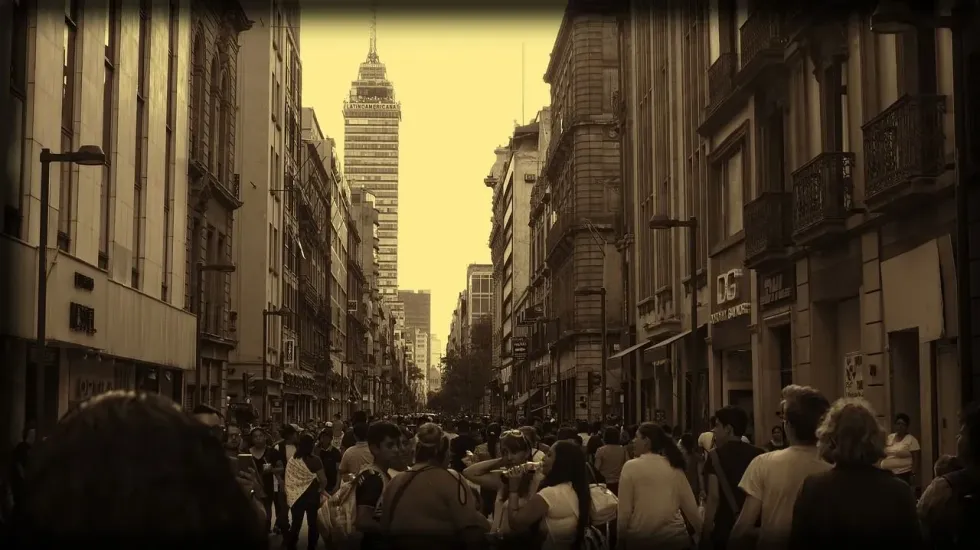Air Pollution In Mexico City Facts And What Is Being Done About It

In the year 1992, Mexico City was listed as one of the highly polluted cities in the world.
After six years, Mexico City was renamed an extremely dangerous city, especially for children. This is a bad reputation which the city has been trying to improve.
Despite having stringent policies and strategies, the city still faces danger of pollution causing melting snow melting on mountains and adversely affecting the health of its community. Many factors are responsible for this situation, like population explosion, industrial growth, excessive use of private vehicles, and public transport.
After reading about the high concentrations of particulate matter in Mexico City, also check out Los Angeles pollution facts and London pollution facts.
Costs Of Pollution
Initial steps and efforts taken to assess the costs of air pollution in Mexico City focused directly on hospital visits, medicine and production losses. This particular study, however, couldn't provide a comprehensive perspective of the overall costs of pollution.
Therefore another research team was then hired to understand the different perceptions of people related to the costs of air pollution. They assessed the indirect costs, which showed that people who often felt sick lost a few days of work, and this included mothers who stayed at home to take care of their sick children.
The disparity between the health effects on every individual depending on their roles was more evident after the study.
Thus, this particular research by experts concluded that if Mexico City successfully reduces the PM10, it would yield some high financial and health benefits. Reducing the percentage of PM10 and ozone by even 10 percent only will be sufficient to save US $760 million per year.
In simple terms, it means that there would be much fewer visits to the emergency room and fewer admissions to hospitals. Most of these visits were related to respiratory system disorders and breathing problems.
The striking conclusion was that reduction in particulate matter would reduce infant deaths by 266 every year. The detailed report shows the scientific statements reported in PROAIRE 2002-2010, which stands for Public and Private Investments in Air Quality Improvement projects. Under this project, around US $15 billion was funded to tackle pollution problems.
Mexico City's Geographic Disadvantage
Mexico City lies 7,392 ft (2,240 m) above the level of the sea. It is located in the crater of a volcano that has gone extinct. The oxygen levels at this latitude are low due to the lower atmospheric pressure.
Increased and excessive fuel burns from engines and rapidly increasing emissions of carbon dioxide, carbon monoxide, and other harmful compounds are due to the lower levels of oxygen. This causes the harsh sun rays to make the toxicity level of these toxic compounds much higher; they even cross the smog levels.
This smog then avoids the sun rays from heating the entire atmosphere in the city. This reduces the level of the protective layer and thus causes the pollution to interfere with the health of people. The geographical location is responsible for the health of people.
Solving this issue has been a challenge and a priority for the Metropolitan Environmental Commission in Mexico City and the Mexican government. The efforts taken to curb the emissions are gaining success. The Mexico City government had introduced programs to improve the air quality and tackle poor air quality and pollution in the '90s.
These programs included reducing the use of private cars. In weeks when the pollution is high, the prohibition of personal vehicles is extended to every second day, and several manufacturing and industrial activities are curbed.
Additionally, all car owners should certify their cars once every six to seven months. These contributed efforts have led to decreasing sulfur dioxide and carbon monoxide levels and these are more controlled now. However, the level of air pollutants of other harmful compounds and dangerous contaminants are high, which is not helping to reduce air pollution.
Examining The Impact On Health
Experts and researchers did a focused study that examined the impacts of serious pollutants, namely PM10 and ozone. The sources of PM10 are many. PM10 is released from such things as diesel trucks, road construction, buses, and forest fires. Both pollutants can cause irritation in the eyes, cardiovascular issues, and respiratory ailments, and can even lead to premature death.
Researchers and environmental specialists from eight different academic organizations, donors, NGOs, and government agencies from Holland, Mexico, and the US have also contributed to the health studies of national and international levels based on PM10 and ozone. The studies and surveys also show the perceptions of the problem of pollution.
The release of fine particles from power plants or harmful fumes from the public transport fuel oil also adds more adversely in this scenario. Gasses like nitrogen dioxide, nitrogen oxide, sulfur dioxide, and others severely affect Mexico City citizens' health. Using liquefied petroleum gas or natural gas as fuel for public transport instead can significantly reduce air pollution levels.
The entire perspective shift that was put forward by the biologist named Roberto Munoz Cruz, who is also the sub-director at Mexico City's monitoring system of the atmosphere, is that it is not air pollution that's the leading cause for killing people but that air pollutants are the additional cause that leads people to die earlier than average.
The Secretariat coordinated efforts with the National Center for Environmental Health and the Women's Institute located in Mexico City.
This led to developing an exposure model of the population that used the data from Mexico's air monitoring network.
This study gave estimates of similar levels of pollution in the year 2010 as they were in the '90s when the levels of ozone concentrations were in excess of standards for around 90% of days and PM10 exceeded standards on 30-50% of days.
Intense sunlight can cause solar radiation, adversely affecting the atmospheric environment. The high concentration of primary and secondary pollutants can lead to chronic diseases like lung cancer.
Taking Control Of Air Pollution In Mexico City
The simple logic is to make the originators of pollution responsible for tackling it. Making people part of the solution is crucial in combating the large-scale pollution crisis. If people are primarily responsible for creating air pollution, they must fight the problem and clean it up.
However, fighting pollution requires training and adequate information awareness to these programs. The phase of this project was developed through the Women's Institute.
The intention was to target those women who seek to find support centers and are financially dependent on a smaller scale of income and women who are also a part of local and political personalities and socially responsible leaders.
Women responsible for serving the household and for basic outdoor chores have a clear understanding of how pollution levels need to be tackled and hence can drive other family members to do the same.
The range of topics covered regarding pollution control was started in collaboration with all the participating community members. They were equally interested in contributing their efforts for effective quality control of air standards and also in making better the overall socio-economic situation of Mexico City.
This was achieved via equitable distribution and sharing of responsibilities, collaborating with the stakeholders, and creating connections for different communities in urban areas to work altogether.
Empowering all women was also crucial and it led to an intentional increase in the recognition and self-identity of these women, which later increased their role in the decision-making within their family and their community.
Promoting the overall community with their capacity to solve and combat pollution problems posed a new challenge for the Mexican government. Six different areas were picked for testing the new training program. Three local and poor communities were on the outskirts of the mountains, and another three were located centrally within green spaces that gave way to firm settlements.
Technicians at the Women's Institute translated the complex technical information into simple, understandable language and turned words into actions. This included community participation at all levels.
The community's contribution via games and activities also helped develop a sense of belonging to the public. There were workshops held to teach and make people understand the importance of fighting pollution and identify the crucial pollution problems to tackle the air pollution in the urban areas of Mexico City.
Special attention was also given to differentiate the roles of women and men in controlling and preserving both problems of the environment within their home and around their neighborhood.
Community participation and efforts were linked with immediate impacts and benefits. The problem of sustainable use and consumption of resources was also added to inspire conscious practice and lifestyle choices where people were aware and fully conscious of their environment-related decisions and these decisions that lead to the degradation of the environment.
The community could then choose to save valuable money by using eco-friendly products and shifting the culture to alternative environmentally-friendly technologies and pollutant fuels. Bulk purchasing of regular products and other options were also connected to controlling pollution.
The collective contributions and efforts of individual actions and collective steps were shown, and a network was started to assist those members at a higher risk, especially children and the elderly. Ailments and diseases are preventable, and so action needed to be taken in advance.
Therefore, it was and still is the responsibility of the community as a whole to save the population and the environment from the harmful effects of pollution.
This community participation project has thus helped the community improve air quality standards and policy programs of Mexico City in the long term. This kind of joint collaboration and initiative is new and hence has its challenges but it embodies the cooperation at an intergovernmental level well to solve the problem.
It is a unique way to develop new ways to analyze the whole cycle of pollution and involve the participation of the community.

Climate Change Action Plan
According to the National Atlas of Vulnerability of Climate change in Mexico City, it is pointed out that around 300 municipalities are highly vulnerable to climate change.
There were different criteria and a new platform based on the data and sources of environmental authorities like the National Institute of Statistics and Geography, the National Population Council, the National Atlas of Risks, the World Bank, the National Center for Disaster Prevention, and the National Oceanic and Atmospheric Administration.
The collaborative and joint efforts of all these institutions resulted in Mexico City working to tackle pollution problems.
The model and tool for tackling pollution focused on climate issues like droughts, floods, hurricanes, fires, and vector diseases such as dengue. The experts in IPCC say that the increasing vulnerability to the adverse effects of climate change is due to the inability of a system to tackle the harmful effects of climate change.
Creating a pollution controlling framework to examine climate change and vulnerability was a tool that provided recommendations to the policy makers, the municipal state, and national level authorities.
The instrument was analyzed on the variables of exposure sensitivity and adaptive capacity. This defines the character and magnitude of climate variation, the degree of how it affects the population, and the institutional resources that permit the trigger of adaptation processes.
These indicators are also responsible for mandating the Sustainable Development Goals (SDG). This keeps the city aligned with the national and global climate action plan.
The Nationally Projected and Determined Contributions (INDC) is a body responsible for stating the action plan and pointing out the strategies for reducing the greenhouse gases to the UNFCCC. Mexico City contains two main contribution components regarding mitigation and adaptation.
The country can therefore afford to have its resources and strategies based on requirements of the international climate action regime where Mexico can obtain extra resources and technology to transfer the climate mechanisms and logistics effectively.
Mexico City must look to improve energy efficiency by improving ozone levels above the city with the help of organizations like the United Nations. The higher concentrations of particle pollutants are a major factor in having high ozone concentrations over the city.
Here at Kidadl, we have carefully created lots of interesting family-friendly facts for everyone to enjoy! If you liked our suggestions for air pollution in Mexico city facts then why not take a look at coal pollution facts or car pollution facts.
We Want Your Photos!
More for You
Bachelor of Science specializing in Mass Communication.

Adekunle Olanrewaju JasonBachelor of Science specializing in Mass Communication.
Disclaimer
1) Kidadl is independent and to make our service free to you the reader we are supported by advertising. We hope you love our recommendations for products and services! What we suggest is selected independently by the Kidadl team. If you purchase using the Buy Now button we may earn a small commission. This does not influence our choices. Prices are correct and items are available at the time the article was published but we cannot guarantee that on the time of reading. Please note that Kidadl is a participant in the Amazon Services LLC Associates Program, an affiliate advertising program designed to provide a means for sites to earn advertising fees by advertising and linking to Amazon. We also link to other websites, but are not responsible for their content.
2) At Kidadl, we strive to recommend the very best activities and events. We will always aim to give you accurate information at the date of publication - however, information does change, so it’s important you do your own research, double-check and make the decision that is right for your family. We recognise that not all activities and ideas are appropriate for all children and families or in all circumstances. Our recommended activities are based on age but these are a guide. We recommend that these ideas are used as inspiration, that ideas are undertaken with appropriate adult supervision, and that each adult uses their own discretion and knowledge of their children to consider the safety and suitability. Kidadl cannot accept liability for the execution of these ideas, and parental supervision is advised at all times, as safety is paramount. Anyone using the information provided by Kidadl does so at their own risk and we can not accept liability if things go wrong.
3) Because we are an educational resource, we have quotes and facts about a range of historical and modern figures. We do not endorse the actions of or rhetoric of all the people included in these collections, but we think they are important for growing minds to learn about under the guidance of parents or guardians.







